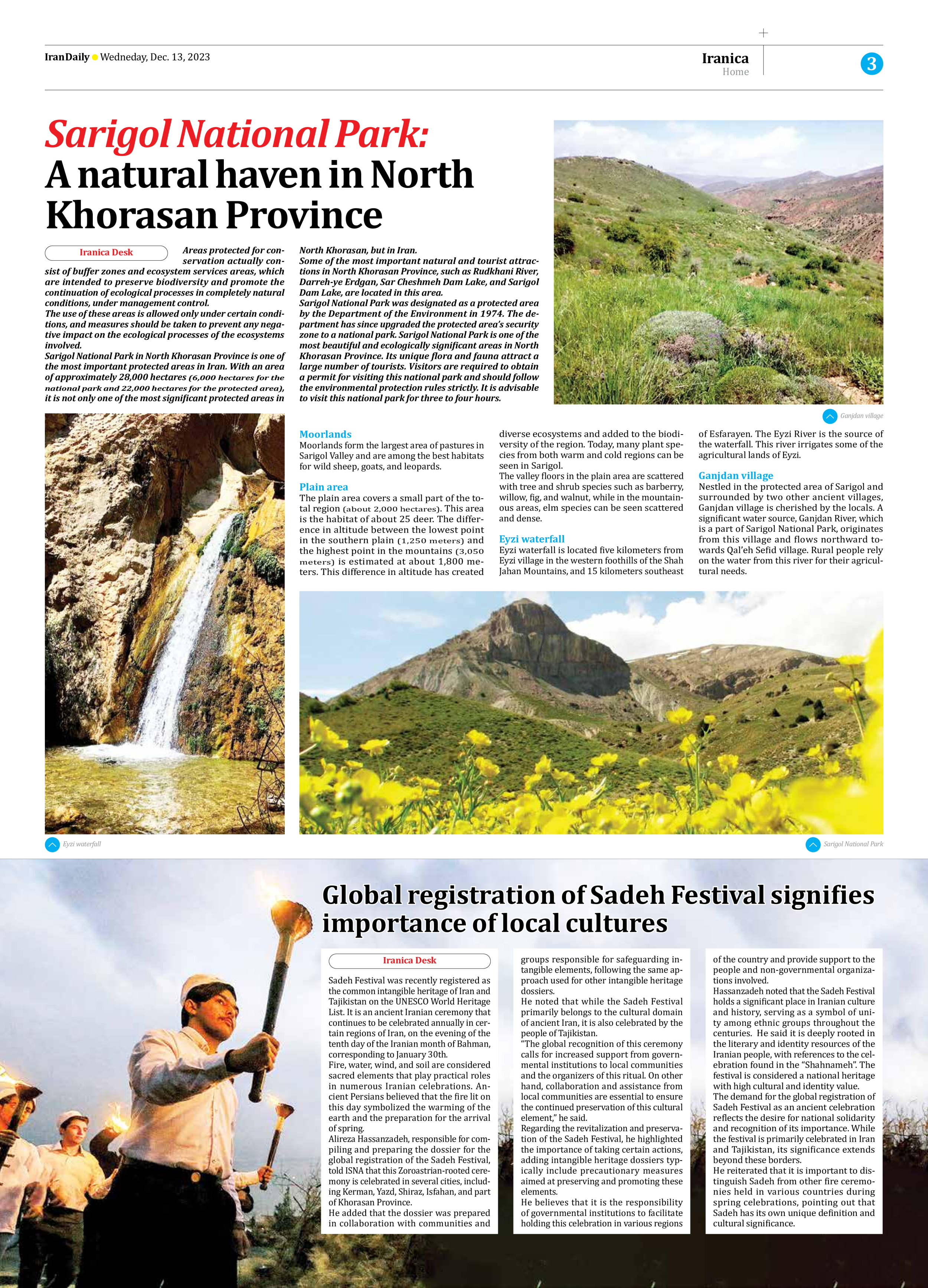
Global registration of Sadeh Festival signifies importance of local cultures
Sadeh Festival was recently registered as the common intangible heritage of Iran and Tajikistan on the UNESCO World Heritage List. It is an ancient Iranian ceremony that continues to be celebrated annually in certain regions of Iran, on the evening of the tenth day of the Iranian month of Bahman, corresponding to January 30th.
Fire, water, wind, and soil are considered sacred elements that play practical roles in numerous Iranian celebrations. Ancient Persians believed that the fire lit on this day symbolized the warming of the earth and the preparation for the arrival of spring.
Alireza Hassanzadeh, responsible for compiling and preparing the dossier for the global registration of the Sadeh Festival, told ISNA that this Zoroastrian-rooted ceremony is celebrated in several cities, including Kerman, Yazd, Shiraz, Isfahan, and part of Khorasan Province.
He added that the dossier was prepared in collaboration with communities and groups responsible for safeguarding intangible elements, following the same approach used for other intangible heritage dossiers.
He noted that while the Sadeh Festival primarily belongs to the cultural domain of ancient Iran, it is also celebrated by the people of Tajikistan.
“The global recognition of this ceremony calls for increased support from governmental institutions to local communities and the organizers of this ritual. On other hand, collaboration and assistance from local communities are essential to ensure the continued preservation of this cultural element,” he said.
Regarding the revitalization and preservation of the Sadeh Festival, he highlighted the importance of taking certain actions, adding intangible heritage dossiers typically include precautionary measures aimed at preserving and promoting these elements.
He believes that it is the responsibility of governmental institutions to facilitate holding this celebration in various regions of the country and provide support to the people and non-governmental organizations involved.
Hassanzadeh noted that the Sadeh Festival holds a significant place in Iranian culture and history, serving as a symbol of unity among ethnic groups throughout the centuries. He said it is deeply rooted in the literary and identity resources of the Iranian people, with references to the celebration found in the “Shahnameh”. The festival is considered a national heritage with high cultural and identity value.
The demand for the global registration of Sadeh Festival as an ancient celebration reflects the desire for national solidarity and recognition of its importance. While the festival is primarily celebrated in Iran and Tajikistan, its significance extends beyond these borders.
He reiterated that it is important to distinguish Sadeh from other fire ceremonies held in various countries during spring celebrations, pointing out that Sadeh has its own unique definition and cultural significance.







